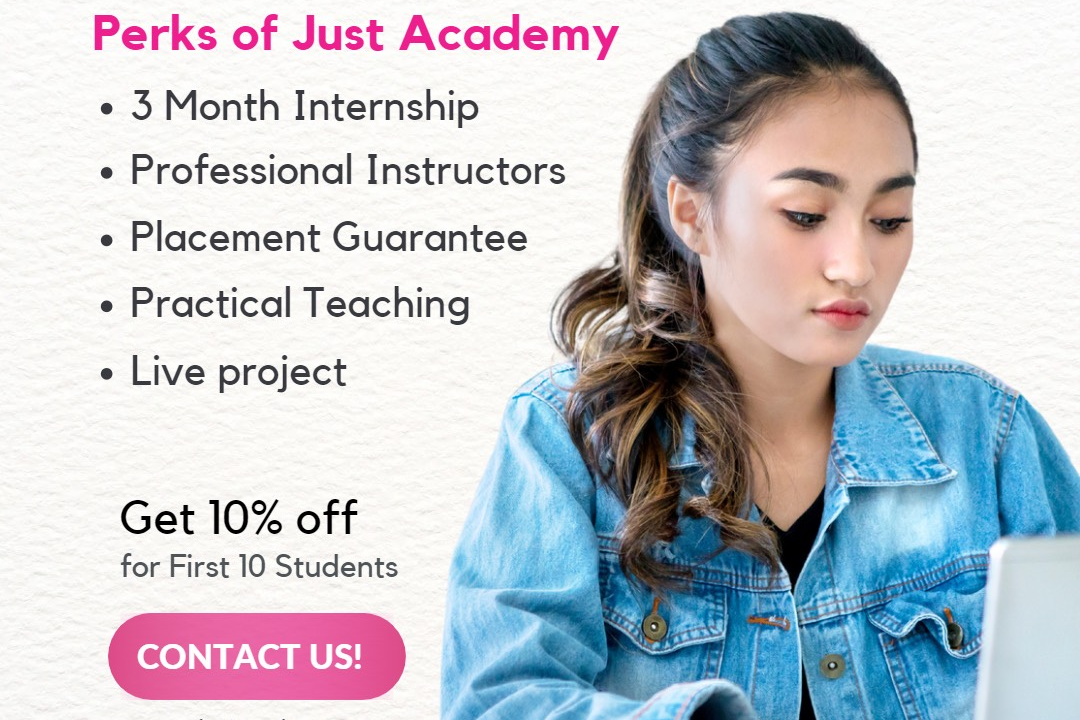Flutter App Design Thinking
Innovative Design Approaches for Flutter Apps
Flutter App Design Thinking
Flutter app design thinking is a user-centric approach that emphasizes empathy, ideation, and iterative prototyping to create engaging and effective mobile applications. It involves understanding the users' needs and behaviors through research and observation, translating insights into design concepts that prioritize usability and accessibility. With Flutter's rich set of widgets and customizable UI components, designers can rapidly prototype and refine their ideas, ensuring they meet user expectations while maintaining aesthetic appeal and performance. This iterative process aims to foster innovation, allowing teams to explore multiple design solutions, receive feedback, and continually improve the app's functionality and user experience before final implementation.
To Download Our Brochure: https://www.justacademy.co/download-brochure-for-free
Message us for more information: +91 9987184296
1 - Understanding User Needs: Identify and analyze the target audience's requirements through surveys, interviews, and observations to create a user centered design.
2) Defining Problem Statements: Translate user needs into clear, concise problem statements that guide the design process, ensuring that solutions remain focused and relevant.
3) Ideation: Encourage brainstorming sessions to generate a wide range of ideas. Utilize techniques like mind mapping and sketching to visualize potential solutions.
4) Wireframing: Create low fidelity wireframes that outline the app’s layout, structure, and basic functionalities. This serves as a blueprint for the app design.
5) User Flow Mapping: Develop user flows to map the journey of users through the app, illustrating how they interact with different features and navigate from one screen to another.
6) Prototyping: Build clickable prototypes using Flutter's rich set of widgets. These prototypes allow for interactive testing of the app's design and user experience.
7) Usability Testing: Conduct testing sessions with real users to gather feedback on the app prototype, identifying usability issues and areas for improvement.
8) Iterative Design: Adopt an iterative approach by refining the design based on user feedback, making necessary adjustments to enhance user experience continually.
9) Visual Design: Enhance the app with an appealing visual design, including color schemes, typography, and iconography, while considering brand identity.
10) Responsive Design: Ensure the app is designed for a variety of devices (smartphones, tablets) and screen sizes to provide a consistent experience across platforms.
11) Accessibility Considerations: Implement accessibility features to ensure that all users, including those with disabilities, can effectively use the app.
12) Performance Optimization: Focus on optimizing the app's performance by utilizing efficient coding practices and Flutter's built in features to ensure smooth operation.
13) User Documentation: Create comprehensive user documentation and help guides to assist users in navigating and utilizing the app features effectively.
14) Versioning and Updates: Plan for future updates and versioning of the app to incorporate new features and improvements based on ongoing user feedback.
15) Market Research & Competitor Analysis: Analyze existing competitors and similar apps to identify trends, features, and opportunities for innovation.
16) Learning and Adaptation: Encourage a mindset of continuous learning by keeping up to date with the latest Flutter developments and user interface design trends.
17) Collaboration and Communication: Foster collaborative efforts among students and teams, emphasizing the importance of communication in the design process.
18) Feedback Loop Creation: Establish a feedback loop where user insights are continually integrated into the design process, keeping the app aligned with user expectations.
This framework can help students grasp the comprehensive process involved in Flutter app design and development, paving the way for them to create user friendly and innovative applications.
Browse our course links : https://www.justacademy.co/all-courses
To Join our FREE DEMO Session: Click Here
Contact Us for more info:
Difference between MySQL and MongoDB
Spring Boot Training
salesforce javascript developer
java real time projects training institutes in hyderabad
Java sdk











